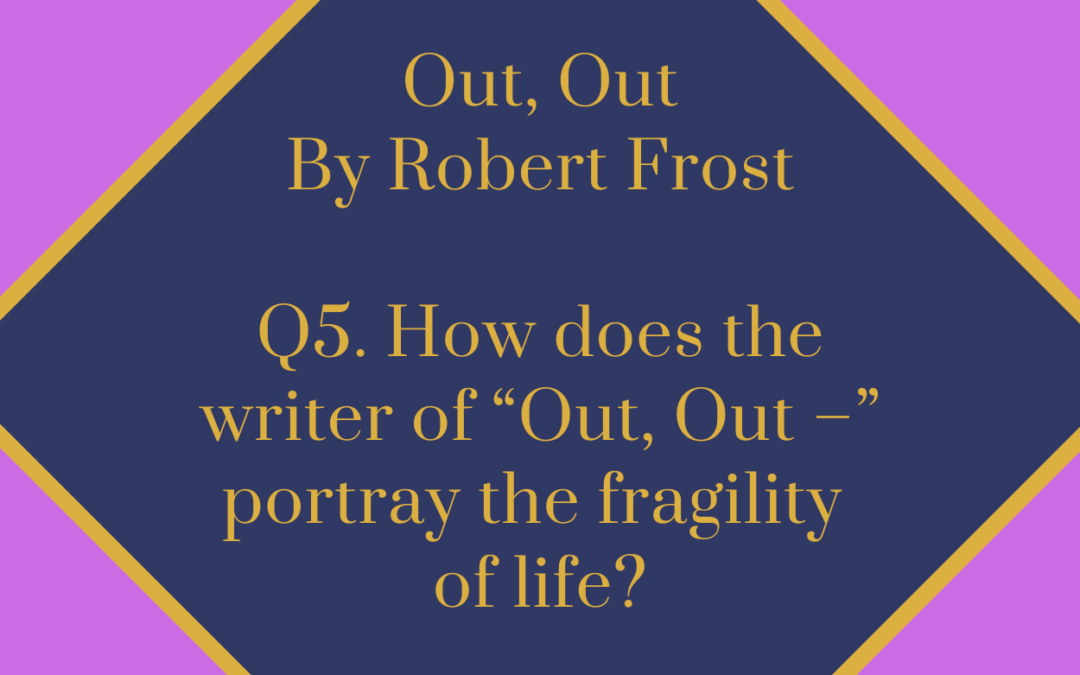Edexcel English IGCSE: Out, Out- by Robert Frost
Q5. How does the writer of “Out, Out –” portray the fragility of life?
In your answer, consider:
- the build-up of tension before the accident;
- the description of the accident;
- other people’s reaction to the accident;
- the writer’s use of language techniques.
You should refer closely to the passage to support your answer. You may use brief quotations.
Edexcel English IGCSE Model Essay by an Expert
In “Out, Out –”, Frost builds tension to prepare the reader for an accident; the speed with which the accident occurs shows how easily such things can happen. The unemotional reactions of the other people in the poem remind the reader of the fragility of life.
During the first half of the poem, Frost hints at something terrible which might occur. The title of the poem is from a quotation from Macbeth about the brevity of life. For those familiar with this play, the title encourages consideration of how life can be extinguished as easily as a candle. The fierce personification of the saw also creates tension and hints at a violent incident ahead: “the buzz saw snarled and rattled”. Further increasing the tension, Frost hints at regret: “I wish they might have said” that the boy could stop work. Although there is no suggestion at this stage that the accident will be fatal, the build-up of tension prepares the reader for a terrible outcome.
The accident itself is described quickly, suggesting the ease with which such serious incidents can occur. The saw is personified again: it “leaped out at the boy’s hand”, like an animal. By blaming an inanimate object, Frost shows that nobody can be blamed. The line “neither refused the meeting” is a euphemistic description of the painful impact of the violent saw with the innocent hand, reflecting the ease with which the accident occurred. The reader then learns that the accident will be fatal: the use of the word “life” instead of “blood” in the line, “to keep / The life from spilling”, suggests that his life is being poured away. The boy’s death is quick, described in just three words about his diminishing heartbeat: “Little – less – nothing!”. The speed of this description shocks the reader, as his death seems so easy.
The reactions of others encourage further reflection on the fragility of life. The death is described casually, with colloquial phrases such as “that ended it” and “no more to build on there”. This casual attitude shows how easily life can end, and also shows that, to these people at least, death is a normal part of life. This impression is confirmed when the people return to their work at the end of the poem: no time is spent on grieving, which suggests that death is neither surprising nor dramatic, but something that could happen to anyone at any time. This attitude might be shocking to the reader, but highlights the fact that in dangerous contexts such as this, people’s grasp on life is particularly fragile.
The poem begins with a young boy at work, and by the end of the poem, the boy is dead and everybody else has continued as normal. This simplicity is utterly tragic, and reminds the reader that life can be easily extinguished.




